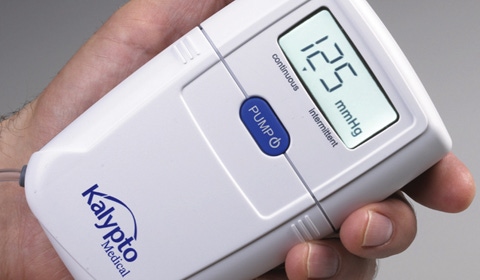Washington Wrap-Up: Kalypto Seeks 510(k) Ban for Smith & Nephew's Wound Device
A citizen petition from Kalypto says PICO, an electrically-powered negative pressure wound therapy system that uses the wound dressing or kit to collect wound exudates, is second-in-class to Kalypto’s first-in-class NPD 1000.
August 19, 2011

Kalypto Medical is asking FDA not to grant Smith & Nephew marketing clearance for its new single-use negative pressure wound therapy device, known as PICO.
A citizen petition from the company says PICO, an electrically-powered negative pressure wound therapy system that uses the wound dressing or kit to collect wound exudates, is second-in-class to Kalypto’s first-in-class NPD 1000. The company also has submitted a petition for a stay of action.
Attorneys representing Kalypto acknowledge in the petition that they don’t know the specifics of the Smith & Nephew 510(k) submission. However, they do offer general commentary on the issues relating to the substantial equivalence of the Smith & Nephew and Kalypto devices.
The petition identifies two possible pathways for analyzing substantial equivalence—using the Kalypto NPD 1000 as a predicate or using legacy negative pressure wound therapy devices as a predicate.
“For either chosen pathway,” the petition says, “petitioner respectfully requests that the agency consider the dialog its own reviewers had with petitioner during the clearance process for the NPD 1000 system. A thorough analysis of previously discussed relevant technology will prevent subtle safety and effectiveness issues from being missed during the review. In particular, petitioner … has identified several key technological discussion points that it feels are very relevant to the clearance process as the agency works toward a precise determination that the PICO device is at least as safe and effective as its predicate(s).”
Kalypto asks FDA to ensure the following in its review of Smith & Nephew’s process, standards, and final performance data:
Smith & Nephew should compare its device to Kalypto’s as the proper predicate.
The substantial equivalence standard must truly be met by establishing the same intended use and same technological characteristics. If there are differences in technological characteristics, unanswered questions of safety and effectiveness must be addressed with appropriate data.
The performance data must be no less than what Kalypto submitted with its 510(k).
FDA must take into consideration the additional and unique claims and technological features depicted by Smith & Nephew in its submission and ensure that any unanswered questions of safety and effectiveness raised by the new technological characteristics be answered by Smith & Nephew.
The review should be informed by the intended use claims made by Smith & Nephew for the PICO device depicted and represented at that company’s Web site.
The submission should be reviewed by knowledgeable technical personnel with a great deal of experience in the wound-management field, powered suction pump devices, and super-absorbing dressing technology, and who can appreciate the issues discussed in the petition.
Smith & Nephew should follow the guidance FDA issued on September 30, 1998 on powered suction pump 510(k)s.
About the Author(s)
You May Also Like

.png?width=300&auto=webp&quality=80&disable=upscale)
